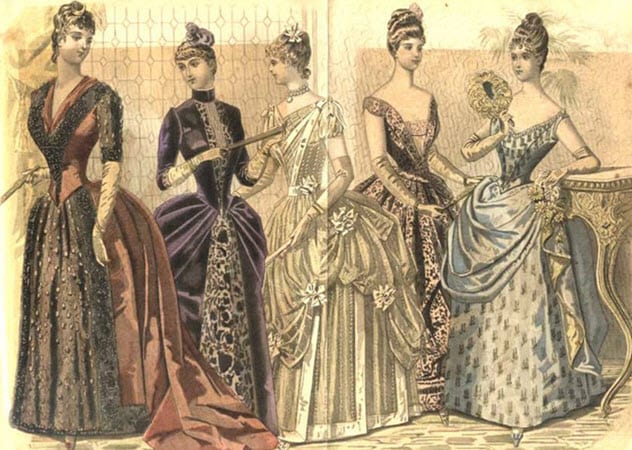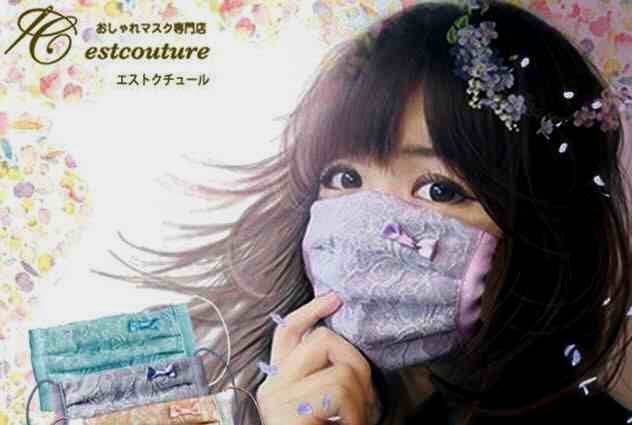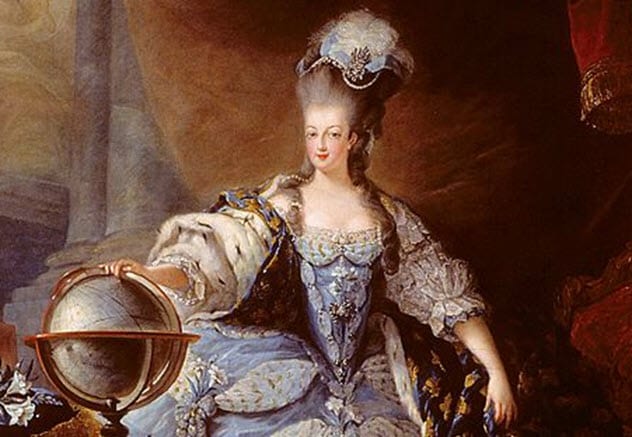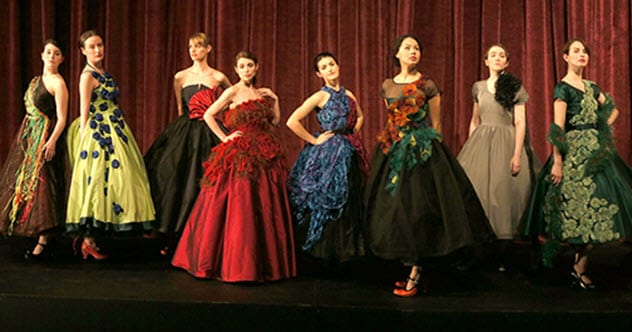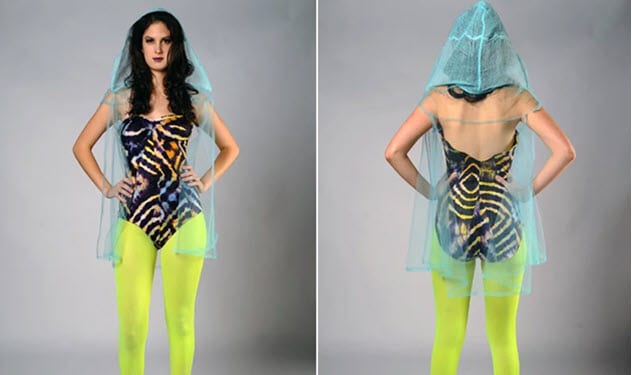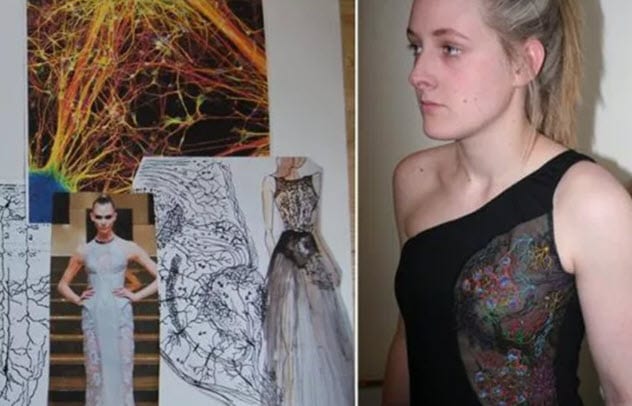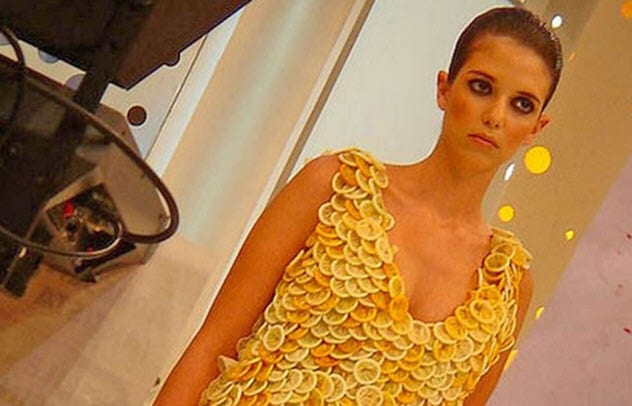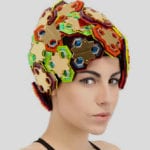But some fashion designers have been influenced by more unlikely sources. In fact, certain fashion trends throughout history—including the present day—have sprung from the strangest birthplace of all—disease. Here are 10 fascinating examples.
10 Tuberculosis Influenced Victorian-Era Fashion
Tuberculosis, a fatal disease which attacks the lungs and is spread through the air, was laying waste to the citizenry of Victorian England in the mid-1800s. At the time, the effects of tuberculosis on the female body were considered beautiful. That’s because tuberculosis made those afflicted thinner and paler. Called “consumptive chic,” the dreaded disease influenced corsets and skirts. Corsets were made pointed to create the appearance of an even thinner waist. Meanwhile, skirts were made immense for the same reason. Due to the great number of funerals being held for those who died from the disease, black became particularly popular. When Robert Koch discovered that bacteria caused tuberculosis, the “health corset” was introduced to allow a woman to breathe more freely, thus permitting her blood to better circulate. Physicians were also convinced that women’s full-length, trailing skirts were collecting street germs and introducing them into homes. So, in the early 1900s, hemlines rose a few inches.[1]
9 The Spanish Flu Inspired The Surgical Mask Fashion Trend In Japan
Starting in 1918, the Spanish flu killed as many as 50 million people worldwide. In Japan, it is estimated that 470,000 people died of the Spanish flu or related causes. At the time, Japanese authorities suggested that wearing masks would be a good way to avoid contracting the deadly disease.[2] And that is how “mask culture” began in Japan. These days, whether used as a fashion statement or when someone is actually sick, disposable face masks sell briskly in Japan. In 2014 alone, sales totaled 23.2 billion yen. And these masks are not just plain white. One company makes lace masks that come in various pretty colors. Men prefer black masks. Metal fans can buy leather masks with studs. They also have masks that come in zebra prints and camo.
8 Alzheimer’s Has Inspired A Fashion Collection
According to the World Health Organization, approximately 50 million people currently have Alzheimer’s disease worldwide. With two members of her family affected by the memory-erasing disease, fashion designer Nadia Pinkney fought back by creating a whole fashion line inspired by the color red—the color in PET brain scans that indicates the parts of the brain that the disease has yet to ravage. In making her Alzheimer’s-inspired clothing line, Nadia worked with Dr. Tom Russ at the Alzheimer Scotland Dementia Research Centre at Edinburgh University to better understand the disease. Then she used brain scans of Alzheimer’s sufferers and turned the scans into prints used in garments and transparent fabric. On top of that, she limited the range of colors in her collection after learning that Alzheimer patients in art therapy tend to choose only one or two colors and fixate on them.[3]
7 Adaptive Clothing Is Designed For Those With Special Needs
Until recently, people with special needs struggled with the clothing they wore. Kids with cerebral palsy might have the buttons on their shirts replaced with Velcro due to severe motor issues. Autistic children often needed to have labels on the insides of their shirts and pants removed because the tags were extremely irritating. Their parents had to improvise in the face of a clothing industry not designed with these special needs children—or adults—in mind. That is changing.[4] Various “adaptive clothing” companies have popped up in recent years to fulfill the needs of this previously neglected segment of the population. These companies are making children’s clothing without tags or seams, jackets with side openings to accommodate those confined to wheelchairs, adult jeans that fit over prosthetic legs, and more. Even high-end fashion is responding with stylish clothes specifically designed for those in wheelchairs. All this clothing created just for people with special needs may lead to psychological benefits for the wearers, too.
6 Inoculation From Smallpox Inspired Hat Design In 18th-Century France
Smallpox ravaged the world for over 3,000 years. At the dawn of the 18th century, 400,000 Europeans were dying from the disease every year. By the 18th century, smallpox inoculation was common everywhere in Europe—except for France. It took the successful inoculation of King Louis XVI and his two younger brothers to finally convince the reluctant French nation to get on board.[5] To celebrate this great moment in history, the hatmakers of Paris created a headdress called pouf a l’inoculation. No drawing of it exists, but it was apparently a series of symbolic images—a serpent to represent medicine, a club to symbolize conquering the disease, a rising Sun for the king, and an olive branch to represent the wonderful relief one gets from having been inoculated. The celebratory headdress was quickly adopted by the fashionable elite. This helped to make getting vaccinated against smallpox a very cool thing to do.
5 Ball Gowns Inspired By Cancer Cells
One woman was so fed up with the amount of ugliness that cancer brings into our world that she decided to make something beautiful from it. Inspired by microscopic pictures of cancer cells and cellular systems, Jacqueline Firkins, an assistant professor at the University of British Columbia’s Department of Theatre and Film, crafted a collection of ball gowns. The cellular images, which came from the work of UBC scientist Christian Naus, appear as large, embroidered dots that spread down the length of one bright yellow and one dark green gown. Other gowns use ruffles or feathers to represent the cancer cells. Under the project title of “Fashioning Cancer: The Correlation between Destruction and Beauty,” Firkins hoped to “tap into what a woman might be feeling about her body as she undergoes the disease, but simultaneously reflect a strength, beauty, and resilience.”[6]
4 A Designer And A Scientist Created An Anti-Malaria Bodysuit
According to the World Health Organization, malaria killed 435,000 people in 2017. The disease is spread by mosquitoes. Insecticide-treated nets are used to keep mosquitoes from entering homes. But what do you do outside the home? Enter apparel design undergraduate Matilda Ceesay and scientist Frederick Ochanda, both of Cornell University. They worked together to create a stylish hooded bodysuit that is embedded with insecticide at the molecular level. By binding the insecticide and clothing material at the nanolevel, the garment can be loaded up with three times more insecticide than the nets. Debuted at a fashion show at Cornell University, the one-piece bodysuit is hand-dyed and “explores and modernizes traditional African silhouettes.”[7]
3 Designers Are Starting To Create Clothing Especially For Blind People
Imagine shopping for clothing and not being able to see it. This has been a regular experience for blind people—until now. Designers in Lithuania, Argentina, and the United States are creating clothing exclusively for blind people. Lithuanian designer Rugile Gumuliauskaite puts together books of her fashion collections. Using molding, carving, and stamping, her designs pop up from the surface of the books so that her blind customers can get a feeling for the clothes before slipping them on. Based in Argentina, Maria Sol Ungar uses braille, embroidery, and textures in her garments to give her blind customers as much information as she can about her clothes—including washing instructions. US designers Bradford and Bryan Manning, who suffer from an illness that slowly takes away your ability to see, include information in braille on the tag of each clothing item. About 70 percent of their employees are blind, and everything they earn goes to research aimed at ending blindness.[8]
2 A Dress Inspired By Schizophrenia
According to the World Health Organization, more than 23 million people worldwide have schizophrenia. People with the illness often suffer from hallucinations, both visual and auditory. In the UK, students from the Winchester School of Art consulted with neuroscientists at the University of Southampton to create clothing that drew inspiration from a number of diseases, including schizophrenia. With the help of these neuroscientists, design students learned about cellular and synaptic function and dysfunction and got to visit science labs in preparation for their design projects. One student, Nikki Day, looked into the morphology of various classes of neurons before designing a dress with “embroidered images to reflect the theory of schizophrenia as a disease of aberrant brain circuit connectivity.”[9]
1 An Artist/Fashion Designer Created Latex Dresses To Fight AIDS
According to UNAIDS, 37.9 million people worldwide were living with HIV in 2018. To remind people to keep safe during sex, artist and fashion designer Adriana Bertini designed a collection of dresses made up entirely of latex. For instance, she once created a wedding gown out of 80,000 condoms.[10] Dying and shaping thousands of condoms into colorful and stylish dresses, gowns, and bikinis, Bertini doesn’t make the clothes to be worn. Instead, she considers them to be works of art that carry an important message. Domenico is a cinema obsessive who writes for his own film blog, So Many Films, So Little Time.
